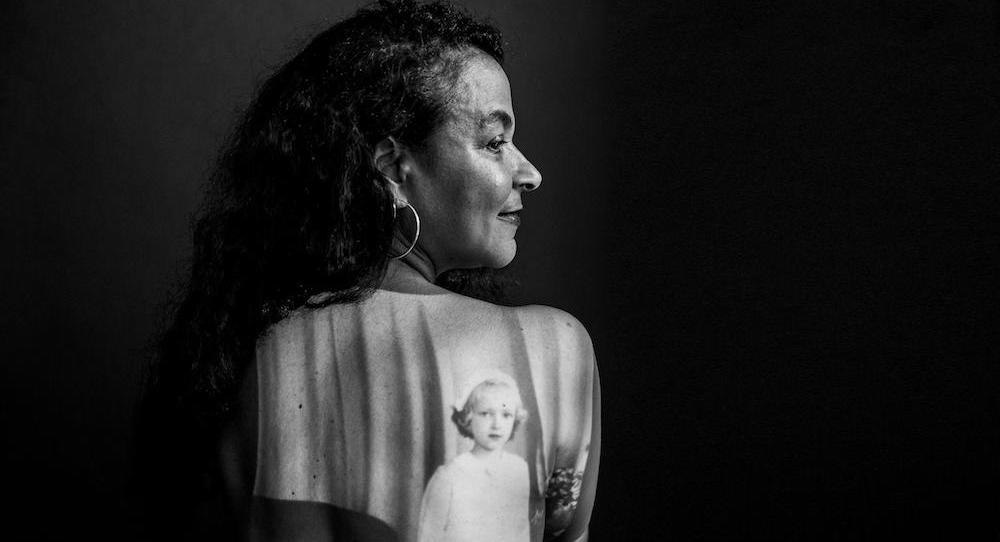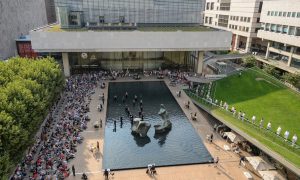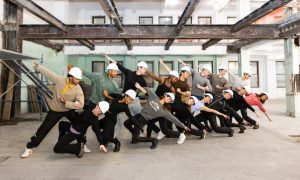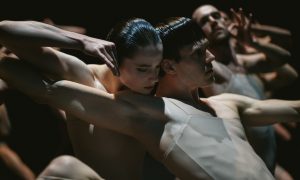One main way the arts differ from disciplines such as math and science is that there are many possible paths to an ultimate goal. Gabri Christa’s life and work illustrates how in the arts, many separate paths can have a successful outcome – sometimes surprisingly so. Christa came to movement through yoga, and choreographed poses together as a dance before ever taking formal dance training, for instance.
Christa is a New York City-based dance educator, performer, choreographer, filmmaker and innovator. Her upcoming work, MAGDALENA, demonstrates her expertise and interest in many of these areas. It’s a daring multi-modal work taking on big issues such as race, immigration and memory. Here, Dance Informa speaks with Christa about the work, her life in art and how dancers are wonderful, worthy just as they are.
How did you come to dance? What drew you to it?
“I have been practicing yoga since I was nine, and I started making solos from the poses. At 16, I already had a strong need to express myself. I was already writing – poetry and short stories – and dance became another way of my creative expression. I had no training beyond yoga (although I did some social dancing) and no idea what modern dance was. A professional local dancer, Dolly Bechers, who had been performing abroad, saw one of my performances and told me I should check out modern dance. When I left the island of Curaçao where I grew up and went to the Netherlands to study journalism, I took some classes, and I saw Trisha Brown and others – and that was it. It still baffles me today how I just started making dances without knowing anything about it.”
How did you come to choreography?
“Well, the choreography was always first, and that started me actually on the road to learning technique and more. But for me, it has always been about expressing an idea in this unique, beautiful way.”
You’ve taught extensively. Some say students teach teachers as much as teachers teach their students. What’s something unique and meaningful that you’ve gained from teaching – as a performer, choreographer and perhaps even as a person?
“It is true; you learn so much from teaching. I have learned that after all this long journey, all the skills we work so hard for are not that important. When you are in the moment and just love the movement, you are beautiful just the way you are. I see that in my students when they let go of all that self-criticism. Self-acceptance goes a long way and makes learning easier, too. I learn from that so much myself as well.”
Your work, MAGDALENA, is a dance theater work, with many other supporting artistic media, as well as aesthetic factors. What intrigues you about this kind of multi-modal work?
“Everything is there to express an idea. Sometimes it is just dance, but in this case, the story is so complex it needed different ways of communicating. The idea always drives what gets used. It doesn’t start with, ‘Oh, I am going to make a dance theater or multimedia work.’ It starts with the idea.”
MAGDALENA is also a solo work. You’ve performed in several companies, in several ensemble works. Can you speak to the experiences of both – how they differ, how they align, how a skill in one complements work in another?
“Dancing with others is beautiful. I think I most enjoy performing duets, having a dialogue with a partner. It was helpful to dance in a company and see how other choreographers worked, to be ‘just’ a dancer. Personally, I love being involved in the creative process.”
The work takes on many big, universal issues – race relations, immigration and memory loss in advanced age. What about dance can allow it to speak to these big issues, do you think? Does the art form have limitations in this regard?
“I use language to talk about those issues in the piece; I wouldn’t know how to dance those. But the feeling of watching a loved one lose memory can be only expressed through choreographed movement. Dance to me is still about that what I cannot express in any other way. That still keeps me in love with dance and movement.”
You’ve achieved an impressive amount in your career. Where to from here – what else would you like to conquer, to investigate, to journey through as an artist?
“Thank you! I’m interested in what I can contribute, what I can try to understand through creation, how can I in a small way – help? I am not interested in a ‘career’. That’s why nothing I do is linear. The question drives me, the need to understand keeps me learning, keeps me growing. I am curious and I love challenging myself, stepping outside of my comfort zone. That drive does help me get things done and motivates me when I am afraid of stepping right into the uncomfortable feeling. I’ll be delving into neuroscience for my Atlantic Fellowship for Equity in Brain Health. I was awarded this fellowship as a result of my work on MAGDALENA; it petrifies me and excites me at the same time that I will be among hardcore scientists. Who knows what comes out of that? How will I look at dance after that? Brain and body are so connected.
That being said, I have two ambitious feature films I really want to make. It will be an enormous effort to make that happen. Oh, and so many other ideas that keep me going – in dance and film and all in between. At the end of the day, it’s all about the humanity and making this life more bearable. We can create understanding for each other through dance, art and creation.”
Gabri Christa’s MAGDALENA will be presented at NYC’s Theaterlab on Wednesdays through Saturdays, September 12-15 and 19-22. For tickets, click here.
By Kathryn Boland of Dance Informa.















